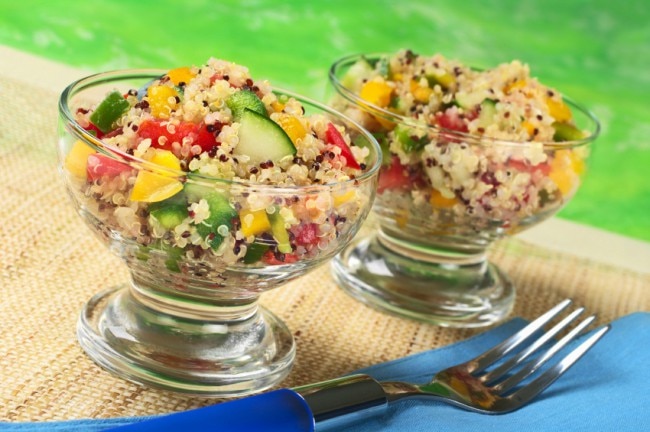One of the best ways people can improve their diets is to eliminate foods that generate unpleasant reactions in their bodies. The media’s increased coverage of gluten sensitivity and intolerance (symptoms include bloating, abdominal discomfort and even joint pain) has prompted many individuals to go gluten free, even though they’re not medically allergic to the substance.
There’s a challenge, of course. Grains, breads and cereals — staples of most people’s diets — is where gluten is plentiful. What happens when gluten-loaded grains — wheat, rye, barley — are suddenly off limits? Here are some great, gluten-free solutions that are also loaded with fiber. Although these foods are technically not grains, they are used just like them.
Quinoa. An ancient food staple of the Incas, grown for centuries in the Andes of South America, quinoa (pronounced KEEN-wah) has a very high protein content, which is a boon for vegetarians. It’s high in calcium and a good source of iron, phosphorous and the B vitamins.
Quinoa is extremely versatile as a cooking ingredient. It can be served as a side dish, used as a thickener for stews and soups, ground into flour and used in baking, or become the key ingredient in a dessert pudding. It’s also a great substitute for bulgar wheat in tabouli.
Millet. Many health-minded people are huge fans of millet, a very digestible grain with a sweet, nutty flavor. An ancient food staple, millet contains magnesium and B vitamins, and research has demonstrated its antioxidant activity. Millet can be used as a side dish and cooked as a porridge.
Buckwheat. Despite its name, buckwheat contains no wheat. But it contains protein, B vitamins and minerals like phosphorus, potassium, iron, calcium, lysine and rutin, a bioflavonoid.
When they’re dehulled, buckwheat seeds are called groats. In toasted form, it’s known as kasha. Buckwheat is a popular ingredient in crepes and pancakes.
What’s your favorite way to serve up gluten-free grains? Share it with us in the comments below.

